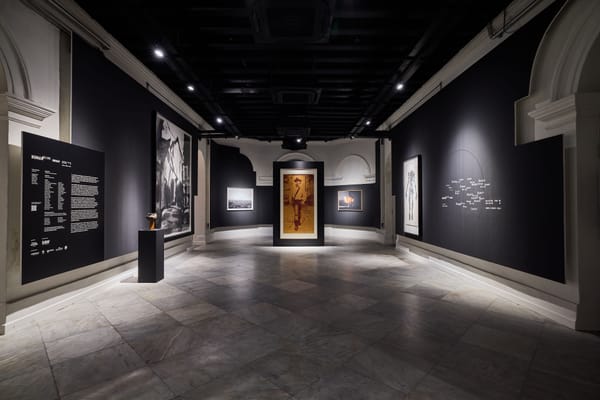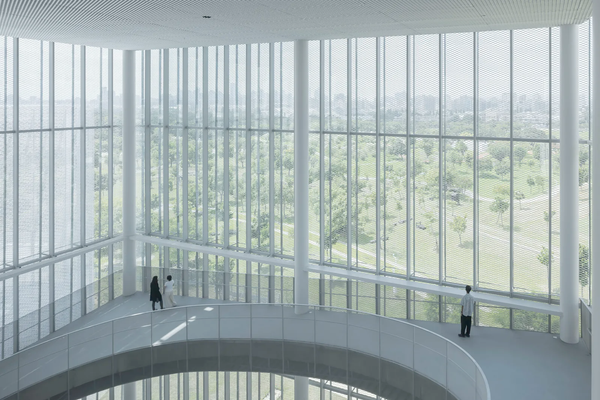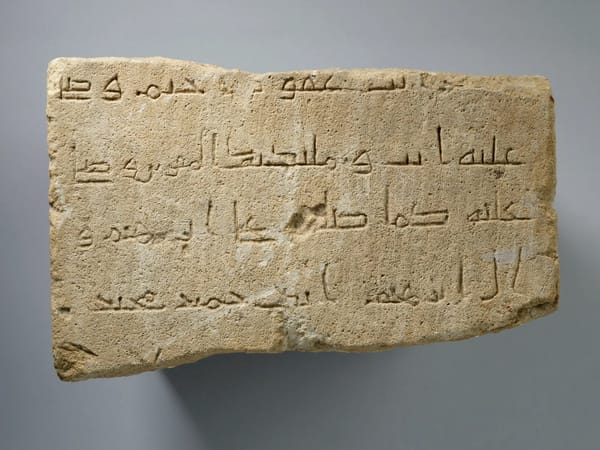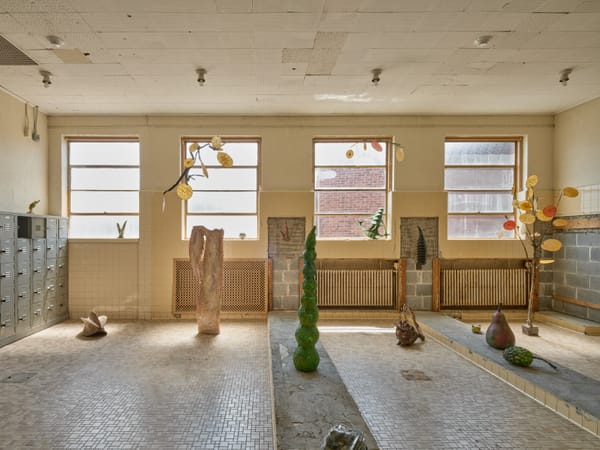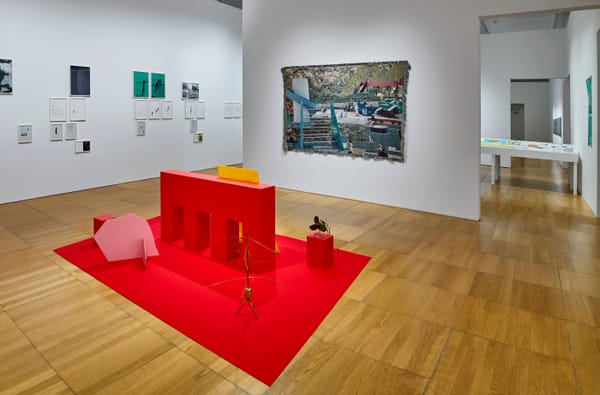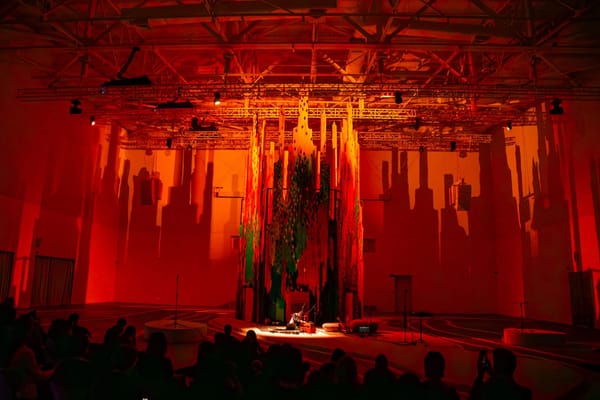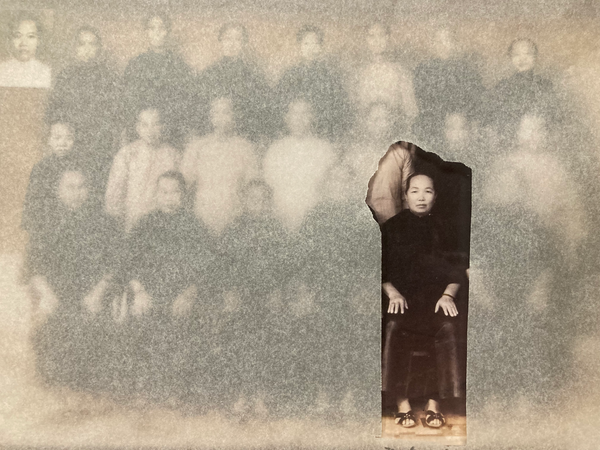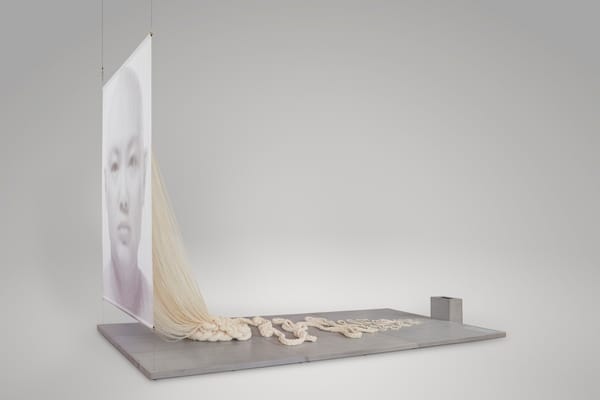Shows
Bodily Control in Bang Geul Han’s “Land of Tenderness”


“Bang Geul Han: Land of Tenderness”
The 8th Floor, New York
March 16–June 24, 2023
Showcasing Bang Geul Han’s latest work, The 8th Floor’s solo exhibition was small yet direct. Immediately striking were several textiles strung throughout the gallery’s open floor. Comprising much of the show with four entries that vary in size—as small as decorative wall art to as big as an unrolled carpet—the pieces in the series Warp and Weft (2021–22) were painstakingly weaved from United States court cases, government documents, executive orders, and policies, most of which were about anti-immigration and anti-abortion. Taken as a whole, the textiles present black-and-white patterns created by the documents printed on the paper tapestry. Traces of blue, yellow, and red strips dapple the works, disrupting their uniformity. In Warp and Weft #01 (2021), the passage, highlighted in red, “perform abortions except where the life of the mother could be” stands out. At the level of the strips, words are obscured and ultimately severed from the sentences of their original source. Like an alchemist, Han transmuted the inscrutable and limiting legal language into pleasing aesthetic objects associated with femininity and labor, so-called “women’s work.”

Hung near the textiles were three photographs portraying Han, nude, performing different actions: sleeping in bed, reading in bed, and reading while on the toilet. In each, the fabrics drape over either her head or her chest, rendering her featureless, anonymous; she is just a body, just an object.
This co-opting of weaponized language seen in Warp and Weft was a key strategy in the show and was especially apparent in its eponymous work: Terre de Tendre (Land of Tenderness) (2023). Based in virtual reality, this immersive work plants the spectator in a small boat as tinkling, airy ambient music plays, simulating the experience of a child migrant. This is not a realistic but a conceptual space. As one drifts along a body of water in a borderland region made up of hills dotted with signs reminiscent of gas stations or those indicating commercial stops along highways, titles taken from Supreme Court cases about citizenship, immigration, and property ownership flash in the field of vision; red bubbles that one can pop reveal passages from “Restriction of Immigration,” an 1896 Atlantic article by Francis A. Walker that echoes the sentiments of many right-wing politicians today. Elaborating on an “objective” point about the character of people who arrive in the U.S., Walker says: “They are beaten men from beaten races; representing the worst failures in the struggle for existence.” Terre de Tendre intends to generate empathy with the plight of people coming to a country in which the government, for centuries now, actively considers them as a threat, as subhuman, as other.
.%20Courtesy%20of%20the%20artist.jpg)
As indicated in these works, as well as a third, the body is a site of violence and control. Displayed on a low-standing platform in the middle of the gallery parallel to the reception desk was Apology Bracelets (Harvey) (2022), consisting of numerous pieces of cotton-floss jewelry, the kind made in childhood: friendship bracelets. Bits of phrases (“FORMYCHILDREN,” “I’veGotWork2Do”) are embroidered on each vibrant, multi-colored band that, taken together and read from one side to the next, make up the apology film producer Harvey Weinstein issued after instances of sexual harassment, assault, and rape were reported in 2017, the catalyst for the #MeToo movement in Hollywood. Removed from their source, broken up into chunks, placed on objects symbolic of love and trust—Han starkly reveals how empty the words are.
,%202022.%20Cotton%20embroidery%20floss.%20Courtesy%20of%20the%20artist.%20Photo%20by%20Argenis%20Apolinario.jpg)
Like the tapestries or jewelry displayed, the exhibition weaved together the subject matter of immigration and the female body. Simply yet cogently, it conveyed the confinement and control institutions of power place on bodies in the name of regulation or entertainment. Moreover, Han’s art not only underlined some of the noxious documents of the Trump era in particular and the history of the US government in general, but it also transformed them, integrating them into mixed media meant for open communication, care, and compassion.
